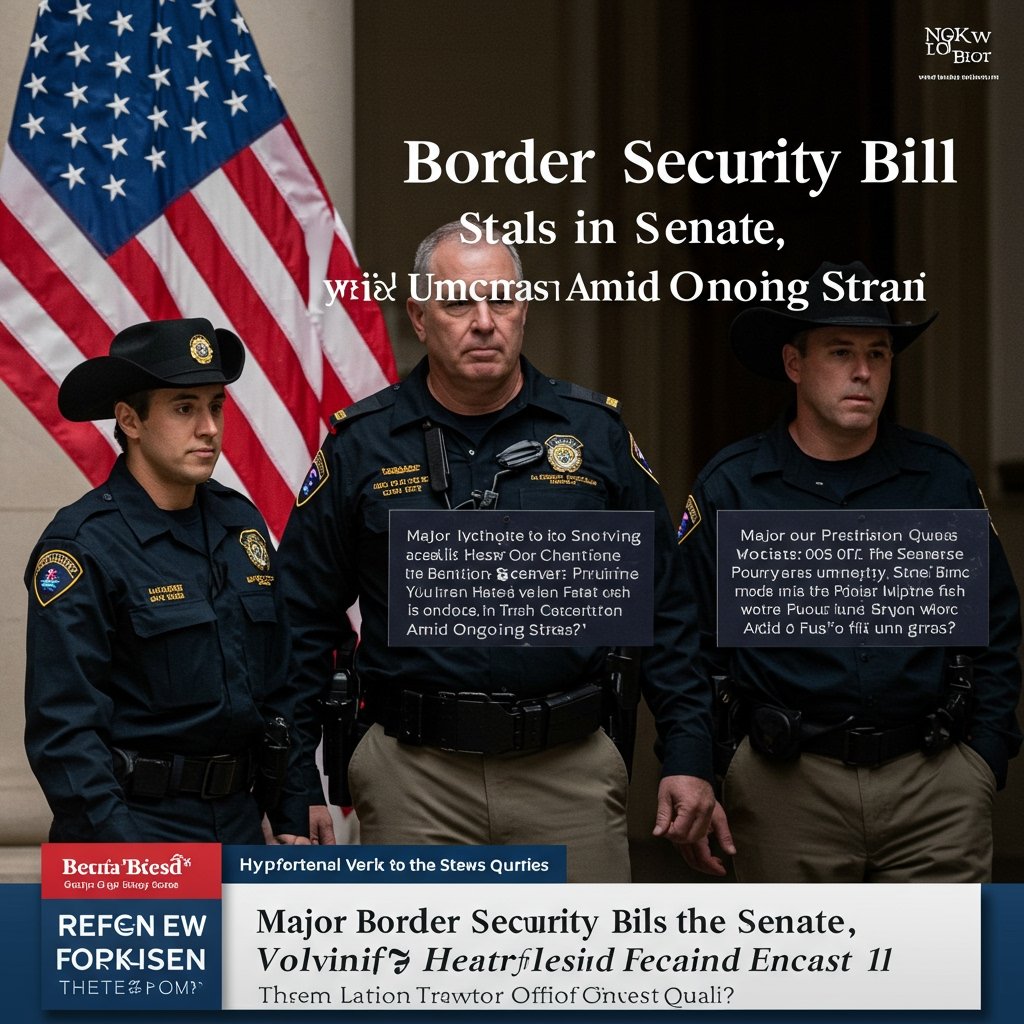Senate Rejects Key Border Security Bill Amid Deep Divisions
Washington, D.C. – A significant legislative effort to overhaul U.S. border security and immigration policy faltered in the Senate on May 15, 2025, failing to garner the necessary support to advance. The bill, known as the “Secure Borders & Pathways Act of 2025,” was the product of months of bipartisan negotiation, championed by a group of leading senators who sought to find a compromise on one of the nation’s most contentious issues. However, the measure ultimately fell short of the 60 votes required to break a filibuster, with the final tally standing at 52-48.
The Failed Vote and Immediate Aftermath
The vote on Wednesday marked a critical moment for proponents of the bill, who had hoped the bipartisan nature of the proposal would overcome entrenched political divisions. The 52-48 vote demonstrated a level of support, but it was insufficient to clear the procedural hurdle of a filibuster, which demands a supermajority of 60 votes to allow legislation to move forward to a final vote. The outcome means the bill is effectively stalled, preventing its consideration by the full Senate unless a new agreement or procedural maneuver emerges.
The “Secure Borders & Pathways Act of 2025” represented a comprehensive attempt to address various facets of border management and the asylum system. Its development involved complex negotiations across the political spectrum, with senators from both parties investing considerable time and political capital in drafting a package they believed could attract broad support.
Key Provisions of the Proposed Legislation
The failed bill contained several significant provisions aimed at enhancing enforcement and reforming immigration processes. Central to the proposal was a substantial financial commitment, allocating a significant $12 billion towards boosting resources at the border. This funding was earmarked for several key areas, including the expansion of personnel and the deployment of advanced technology.
Specifically, the bill proposed the addition of 3,000 new U.S. Customs and Border Protection (CBP) agents. This increase in personnel was intended to enhance patrols, processing capacity, and overall border security operations. The funding also targeted the implementation of advanced surveillance technology specifically tailored for deployment along the critical Texas-Mexico border region, an area that has seen particularly high levels of migrant encounters and enforcement challenges.
Beyond enforcement, the legislation also sought to introduce reforms to the asylum system. A notable provision included reforms to the credible fear standard for asylum seekers. This part of the bill aimed to modify the initial screening process by which asylum officers determine whether a migrant has a credible fear of persecution, a crucial step in the asylum application process.
Points of Persistent Contention
Despite the areas of agreement reflected in the bill’s enforcement and resource provisions, sticking points remained that ultimately prevented it from gaining the necessary 60 votes. Disagreements primarily centered on certain policy reforms related to the asylum system and other immigration pathways.
One major area of contention was the language related to increasing judicial capacity for asylum appeals. Critics and proponents held differing views on how best to address the significant backlog in immigration courts and ensure timely, fair processing of asylum cases. The specific mechanisms for adding judges, streamlining processes, and handling appeals became a difficult hurdle.
The other significant point of disagreement revolved around the process for temporary protected status (TPS) designation. TPS is a humanitarian relief program that provides work authorization and protection from deportation for nationals of certain countries experiencing armed conflict, environmental disaster, or other extraordinary conditions. The criteria and process for designating countries for TPS became a sticking point in the negotiations, reflecting broader debates over humanitarian vs. enforcement priorities.
These specific issues proved too difficult to bridge, preventing the formation of a coalition large enough to overcome the filibuster threshold.
Political Reactions and the Path Forward
Following the vote, Senate Majority Leader indicated that negotiations on border security legislation would continue. However, the path forward remains highly uncertain. Seasoned observers are skeptical of a breakthrough on such a complex and politically charged issue before the August recess, a traditional break period for Congress. The failure of this bill, despite the bipartisan effort behind it, highlights the deep divisions that persist on immigration and border policy within Congress.
Champions of the bill among the leading senators expressed disappointment but also a commitment to finding a legislative solution. However, the current political climate and the proximity of the August recess dim prospects for immediate progress.
Impact on Border Management Strategies
The failure of the “Secure Borders & Pathways Act of 2025” has immediate implications for how the United States manages its border. Without the proposed $12 billion in new funding, the 3,000 new CBP agents, and the specific technological and policy reforms, current border management strategies remain under strain. Agencies continue to operate with existing resources and authorities, facing ongoing challenges related to high encounter numbers, processing backlogs, and the complexities of the asylum system.
The inability of Congress to pass comprehensive border legislation leaves executive agencies to manage the situation through existing regulations and fluctuating resources, a situation that has been described as inadequate by officials on the ground and lawmakers from both parties.
The failed vote on May 15, 2025, serves as a stark reminder of the legislative challenges in addressing border security and immigration reform. While negotiations are said to continue, the skepticism surrounding a near-term breakthrough suggests that significant legislative changes may not be imminent, leaving the current strategies under pressure and the future of border policy uncertain.






